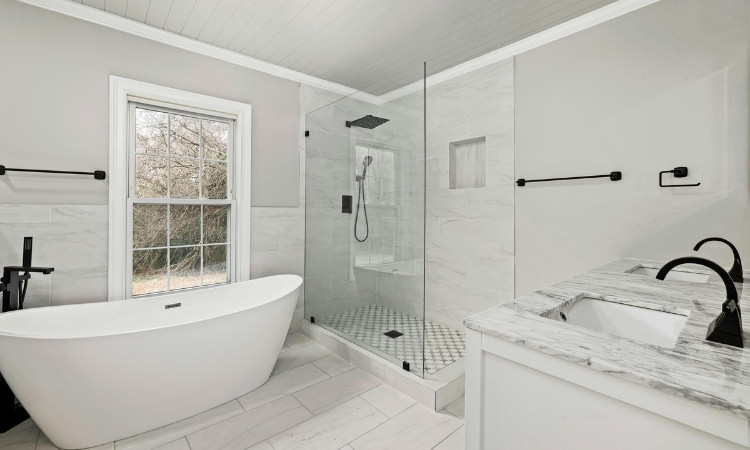Water is a natural asset that you’re supposed to preserve. This is why you need to install a shower faucet in Singapore. It’s a device that helps you control the flow of water, prevents excessive water from flowing, and also makes it convenient for you to use the taps. The best part?
It also controls how hot or cold the water comes out of the taps, making it easier for you to use in different weather conditions. So, how to install a shower faucet in Singapore? This comprehensive guide will teach you that step-by-step. LS Plumber Singapore also offers urinal bowl, shower tap installation, and shower leak repair services in Singapore.
How To Install A Shower Faucet In Singapore?
Are you thinking of saving water, preventing leaks, or just getting rid of that rusty old faucet? You may want to install a shower faucet in Singapore.
Doing so will help you avoid water loss and make your bathing experience more convenient and hassle-free.
The best part is, you don’t need a plumber to get it done. By following the steps below, you can install a new shower faucet yourself at home without any trouble. So, follow these steps carefully as they’re mentioned.
Step 1: Turn Off The Main Water Supply
Before you dive into the process of shower faucet installation, turn off the water. You don’t want water spraying all over your face the moment you loosen something. In most flats and homes in Singapore, the main water valve is either in the bathroom or near the kitchen.
Turn it clockwise to shut it off completely. Then, open your shower to make sure no water is left in the pipes. That’s your test run.

Step 2: Remove The Old Shower Faucet
Now it’s time to say goodbye to the old one. Use a wrench or pliers to unscrew the handle and any fittings.
If you can’t see the screws directly, then don’t panic, as there’s sometimes a cap. You need to pop off the cap with a flat tool, and then you’ll be able to see the screws.
If the faucet isn’t coming off easily and is being stubborn, don’t force it or put too much pressure on it to avoid damage.
Be slow, gentle, and calm throughout the process, and take your time. Keep a towel nearby, as you’ll be using it to clean yourself frequently, as the faucets are usually dirty.
Step 3: Clean The Mounting Area Properly
After the old faucet is out, look at the wall where it was attached. You’ll probably see grime, old tape, or leftover sealant.
Use a scrub or a bit of cleaner to wipe it all off. The new faucet needs a flat, clean area to seal properly.
If the area is not clean, you’ll end up with tiny leaks. And tiny leaks are like annoying guests who never leave.
Step 4: Align The New Faucet And Attach It
Now unpack the new faucet. Take a look at the parts and read the little instruction paper just to know what goes where.
Line up the holes in the wall with the screw mounts on your faucet. Use plumber’s tape on the pipe threads to make the connection tight.
Then, carefully screw the faucet in. As mentioned earlier, be gentle and don’t rush in the process. It needs to be snug but not overtightened, as it could then crack.
Step 5: Secure The Faucet And Test It
When you’ve fixed the faucet in place, it’s time to check if it’s working fine. Double-check all the screws and the alignment to ensure nothing is left off.
Then, turn the main water supply back on and slowly open the faucet to test it a few times.
Is it leaking, wobbling, or having any other issues? If you find any issues, fix them on the spot by either tightening the screws or loosening them a little.
Also, watch closely around the joints and fill them up or fix them if there’s something off.
When the faucet is working fine without leaking and wobbling, you’ve done a great job at installing it.
Step 6: Seal The Edges With Silicone
If you want the water not to slip behind the wall, then you need to seal around the edges of the faucet. These edges are where the water slips and leaks. You can use a silicone caulk to seal them up.
Just apply a small line all around the outer edge and smooth it with your finger or a little plastic card. Don’t use the faucet until the silicone is fully dry. When it’s dry, you can then use it without worrying about water slips.

Step 7: Clean Up And Do A Final Check
After installing the shower faucet, it’s time to clean up. Clean the area and wipe off any tools you used. Step back and look at your work. Does the faucet look even? Is the handle working smoothly?
Now take a quick shower if you want. Just don’t dance too hard with joy and slip. That’s how you fix one problem and make a new one.
Final words
How to Install a Shower Faucet in Singapore? To install a shower faucet in Singapore, start by turning off the water supply. Drain any remaining water from the shower line to avoid a mess.
Next, remove the old faucet slowly and clean the wall where it was fitted. This helps the new one sit properly.
Wrap plumber’s tape on the threads, then fit and screw in the new faucet gently.
Once done, turn the water back on, check for leaks, seal the edges with silicone, and give it one final test.
